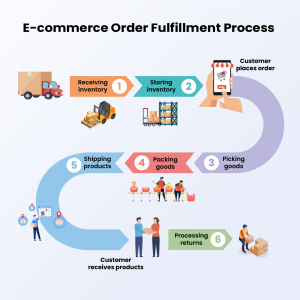San Jose Cabinet Refinishing is a cost-effective and efficient way to update the look of your kitchen. However, it is important to understand the process before you begin.

The first step is to remove all hardware from your cabinets and carefully wipe them clean. Next, sand all surfaces to prepare them for refinishing.
Refinishing offers homeowners a smart way to breathe new life into their kitchens without the expense of full replacement. The process involves sanding down cabinet surfaces and applying a fresh coat of paint or stain. This simple upgrade costs significantly less than a full replacement and can save homeowners between 30-50%. Refinishing also reduces waste by reusing existing materials and avoiding the need to throw away old cabinets.
In addition, it can be done in a fraction of the time that a complete kitchen remodel would take. Replacing cabinets is a labor-intensive project that can leave your kitchen unusable for days or weeks. By contrast, refinishing can be completed in just a few days and is less disruptive to your home’s daily routine.
Before starting, you will need to remove all hardware and wipe down your cabinets with a mild cleaner formulated for wood. It is important to avoid harsh chemicals and products that contain ammonia or bleach. These can damage the finish and cause discoloration over time.
Once your cabinets are dry, you can install your new hardware and enjoy the refreshed look of your kitchen. However, you should keep in mind that refinishing is not permanent and will eventually need to be touched up or re-done.
The final step of refinishing is to apply a protective sealant to the cabinets to preserve and protect your investment. This durable topcoat is easy to clean and provides a long-lasting shine that stands up to regular use. Additionally, it is available in a wide range of colors to match your style and decor. This durable coating is a great choice for resale, especially when combined with Flint-Stone countertops for a high-end look that will appeal to buyers.
Cabinet refinishing is a smart option for those with well-maintained cabinets that have outdated designs or hardware. It offers a more affordable alternative to full cabinet replacement and can be used to complement other home improvement projects like replacing appliances or revamping flooring. It can also be a more cost-effective option than refacing, which replaces cabinet doors and drawer fronts with new materials.
Time-saving
Cabinet refinishing is a less invasive option than a full replacement, and it can be completed in a matter of days. It involves sanding the current finish, repairing any damages, and painting or applying a new finish to the existing surfaces. In contrast, a full replacement can take weeks or even months, and it can leave your kitchen unusable for a long period of time.
This is because replacing your cabinets involves gutting part or all of your kitchen, dealing with noise, dust, and workers constantly coming and going. It can also cost more, since you will be buying new cabinets and paying for their installation. In addition, refinishing is easier on the environment and your budget.
Before you begin the refinishing process, make sure to thoroughly clean your cabinets. Use a soft cloth or sponge to wipe them down with a gentle cleaner, and avoid using harsh chemicals that could strip the finish and cause discoloration. Once the cabinets are clean, carefully remove any hardware from the doors and drawers. Store them in a safe place so that you can easily reinstall them later on.
The next step is to lightly sand the surface of each cabinet with medium-grit sandpaper. This will ensure that the final product is smooth and lasting. Then, you can start applying the refinishing products. It is important to follow the manufacturer’s instructions, as different products require different application methods.
Refinishing your cabinets can be an easy and effective way to give your kitchen a fresh, updated look. However, it is important to keep in mind that this option doesn’t offer the same level of transformation as refacing or replacing. It is a great option for those who want to refresh their kitchen without spending a lot of money.
If you want to give your cabinets a completely new look, consider refacing or replacing them altogether. This will cost you more, but it will provide a more dramatic update. Additionally, refacing will leave you with a more uniform appearance, and it can also add value to your home.
Design flexibility
Cabinets are a huge visual component of any kitchen. Refinishing provides an opportunity to update their look and feel without the need for structural changes. This option is more affordable and quicker than replacing cabinets. It also allows for design flexibility and is an environmentally friendly choice. However, refinishing may not be the best option for older or damaged cabinets.
Refinishing focuses on the surface appearance of the existing cabinets and can be done in a short amount of time. It includes repairing any imperfections and sanding the cabinets down to create a smooth, even finish. A new stain or paint is then applied. This allows you to choose a color that suits your kitchen’s style. You can also choose a custom finish that protects the cabinets from wear and tear.
NHance’s Cabinet Color Shift process is a great option for homeowners who want to change the color of their cabinets while protecting their wood surfaces. This service involves applying multiple coats of paint by hand to achieve a deep and rich hue that’s uniquely yours. The results are a stunning transformation with lasting beauty that’s a smart long-term investment for your home.
The benefits of refinishing include a quick turnaround and minimal disruption to your daily life. Cabinet refinishing is typically completed in just a few days, making it a more cost-effective option than a replacement. It is a smart solution for homeowners who don’t want to wait to enjoy a revamped kitchen.
One major advantage of cabinet refacing is its durability, as it is made from sturdy materials that will stand up to years of use. The refacing process is a more extensive project than refinishing, and can take up to a week. This is due to the need for precise site measurements, ordering of new doors/drawers and veneers/skins, and installation. During the process, new soft-close hinges and full-extension drawer glides are installed. Cabinet hardware is remounted, and crown molding and decorative panels are added. Once the job is complete, there is a thorough cleanup and a final walkthrough to make sure everything looks right.
Environmentally friendly
Cabinet refinishing is an environmentally friendly alternative to replacing cabinets. It reduces waste by reusing existing materials, and it preserves the layout of your space. It also saves energy that would otherwise be used to manufacture and transport new materials. Additionally, refinishing uses less paint than replacement, reducing the amount of volatile organic compounds released into the air.
Refinishing is an eco-friendly option because it doesn’t require a complete overhaul of your kitchen or bathroom. Instead, it breathes new life into your existing space and helps you achieve the look that you want. Additionally, refinishing can be completed in less time than cabinet replacement, which can turn your home into a construction zone for weeks or even months.
Replacing cabinets requires the removal of your existing cabinetry and the installation of new materials. This waste contributes to a significant environmental impact, particularly in terms of natural resource extraction. The harvesting of raw materials and the energy required to manufacture and transport them has harmful consequences for our planet, contributing to habitat destruction and climate change.
Moreover, the production of new cabinets requires significant amounts of electricity and natural resources, including wood, coal, and oil. The energy used to produce them produces carbon emissions that exacerbate global warming. In contrast, cabinet refinishing requires very little energy and doesn’t involve the use of raw materials or heavy machinery.
Additionally, refinishing can be performed using sustainable materials such as recycled glass, concrete, or paper composites. These sustainable alternatives to traditional countertops are durable and offer unique visual appeal.
Moreover, many professional refinishers use low-VOC or no-VOC products that are healthier for the environment and improve indoor air quality. These eco-friendly finishes eliminate toxic fumes that can cause respiratory problems and are a major source of air pollution. VOCs are also linked to cancer and are a leading cause of ozone depletion. If you’re considering refinishing your cabinets, make sure to remove any hardware before the start of the process. Afterward, store the hardware in a safe place so you can easily reinstall it later. This will prevent paint or stain from getting on the knobs, handles, and pulls, which can cause damage or create a mess when removed.




